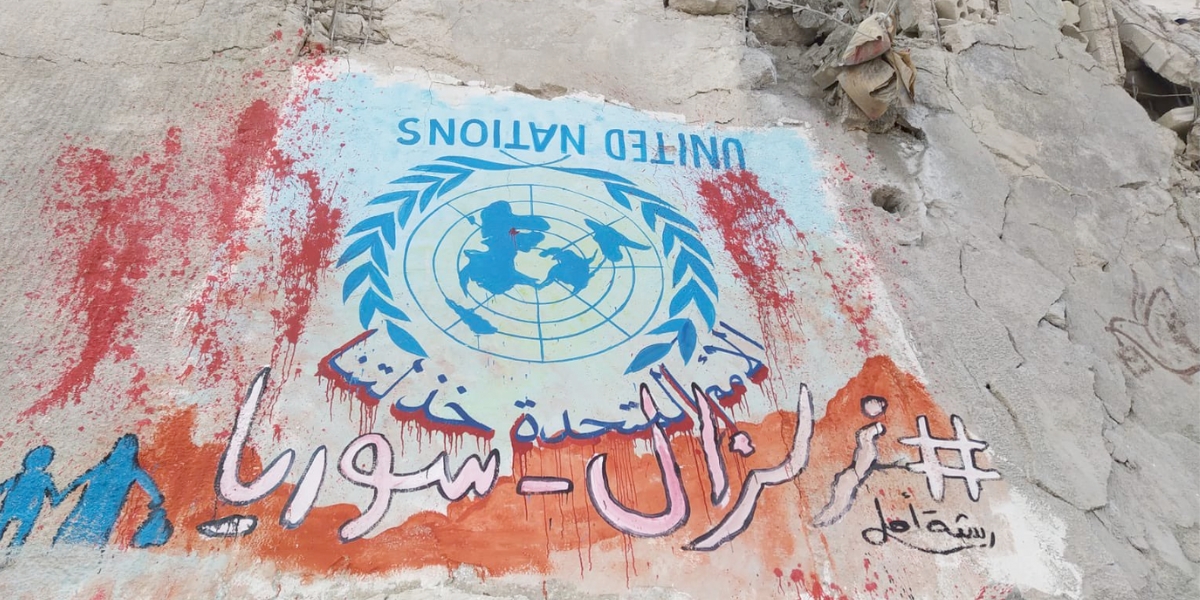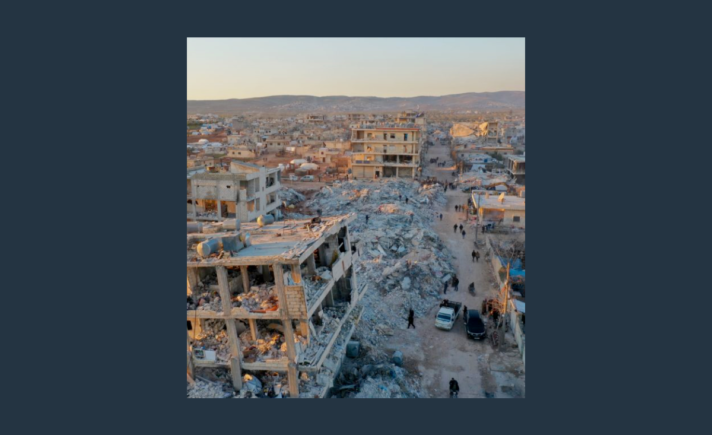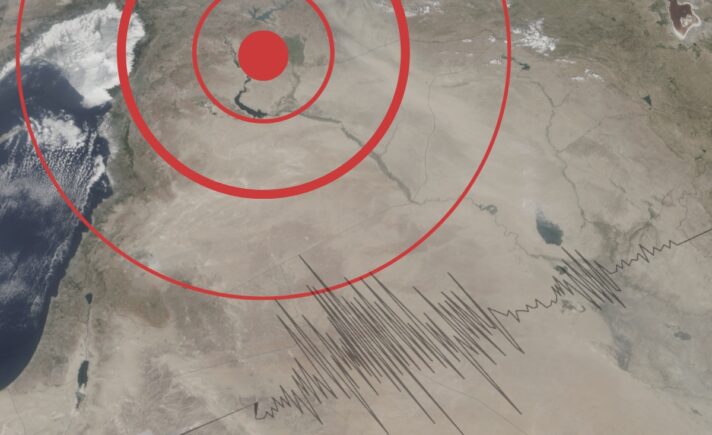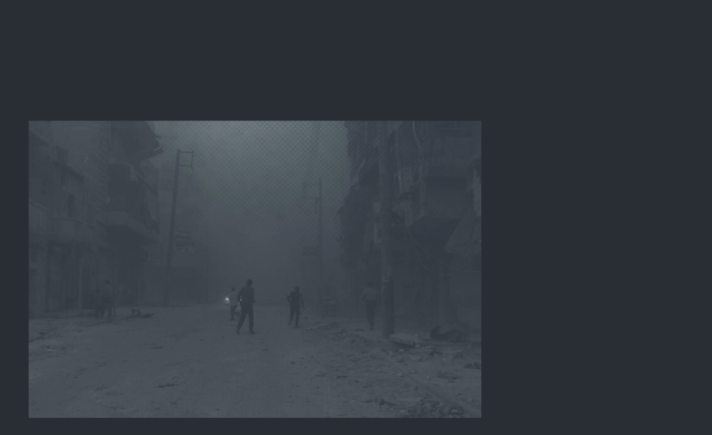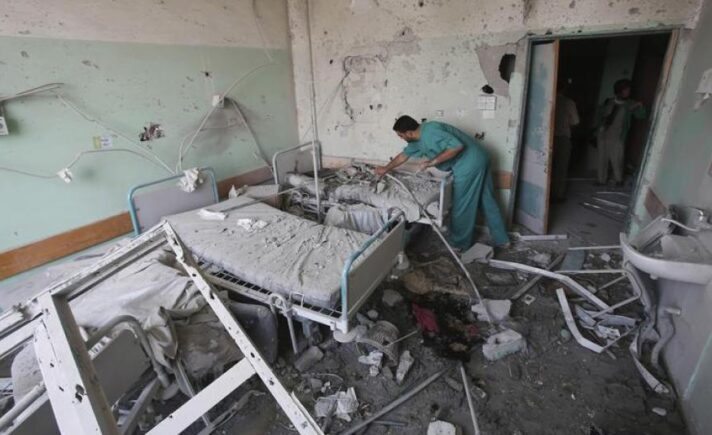The earthquake that struck southern Turkey and northern Syria at dawn on February 6, 2023, did not, naturally, take into account the dynamics of the conflict within the borders of Syria. Nor did it care that Syrians in Turkey needed a permit to visit their country, or that the Turkish gendarmerie were killing Syrians as they tried to cross the border. Naturally, the earthquake did not care that the United Nations, according to the hyper-conservative judgment of its lawyers, needed either permission from the Syrian government or a mandate from the Security Council to deliver humanitarian aid from Turkey to Syria. No one told the earthquake that instead of the search and rescue equipment needed to salvage the victims buried under the rubble, only the bodies of its Syrian victims in Turkey would cross the border for burial. The earthquake did not know, or care, that the president of Syria would wait eight days before allowing aid to enter northwestern Syria, or that the prime minister of the interim government would not dare receive aid from separate forces controlling northeastern Syria without the permission of his Turkish allies.
On either side of the Syrian-Turkish border lies a unique humanitarian response model — one of the most complex in the world. Northwestern Syria is covered operationally and programmatically from Turkey, but functions executively and institutionally from Syria through local teams. In Damascus, the Syrian regime’s model of response is shaped not by borders, but by the government’s use of aid as a tool for corruption and control. This effort is led by the Higher Relief Committee, through which all aid passes. HRC is a committee which arranges all UN requests for humanitarian access with key government ministries, themselves controlled by the intelligence forces. Since approval from the Syrian Arab Red Crescent is required for all HRC aid deliveries, the Syrian government controls who receives relief, where, and when, in both regime and rebel-controlled territories.
On February 5, the day before the earthquake, the status of the humanitarian response was already below optimal: 90% of the population of northwest Syria depended on humanitarian aid, but over the course of the past year, only 60% of the needs of the food sector, and only 26% of the health sector were funded. The region was exhausted after a decade of war and politicization of aid. During the first hours after the earthquake, we set these complications aside as we desperately searched for news of friends and colleagues in the affected area, but it soon became clear that while the earthquake could cross borders and conflict lines at will, the rescue teams and their equipment could not.
The Turkish cities of Gaziantep and Antakya, where the UN and humanitarian organizations manage the response to northern Syria, were among the cities most affected by the earthquake. That made it difficult for humanitarian workers, whether international, national, or local, to address the disaster. The UN leadership should have used its powers to deploy all available tools and mechanisms to deal with the disaster, but it did not. Among the things that the UN leadership (the regional coordinator, the Secretary-General, and Deputy Secretary-General for Emergency Response) could have done was activate two mechanisms: the UN Disaster Assessment and Coordination, which allows teams to be on the ground within 12 hours of a disaster, and the International Search and Rescue Advisory Group. Notably, these were already activated in Turkey, and regime-held areas, despite Turkey’s well developed search, rescue, and relief capabilities. The scale of the disaster demanded the assistance of all possible assets. But these mechanisms are activated either by request from the government of the country affected by the disaster, or the UN resident in that country; they allow the deployment of teams and equipment within 12-48 hours on the territories of the affected country, and the use of all possible crossings to reach those affected by the disaster. Moreover, it was the responsibility of the UN to activate a surge team to support the affected teams.
On his Twitter account, UN Under-Secretary-General Martin Griffiths stated that 4,948 search and rescue experts were facilitated through the UNDAC mechanism, in less than 72 hours, to respond to the earthquake in Turkey and Syria. None of them arrived in northwestern Syria in territories outside the control of the Syrian regime. In contrast, governments allied with the Syrian regime sent 8 search and rescue teams and 3 medical teams to government-held areas. They activated air bridges from their countries, bringing more than 132 relief planes from 25 countries in 10 days. The peak arrival of these aircraft occurred during the first 48 hours after the earthquake – the life-saving window of opportunity. Local sources involved in humanitarian work indicated that throughout the tragedy, the Higher Relief Committee did not lift any of the security measures it imposes on relief operations in government-controlled areas, which makes the real beneficiary of this aid the warehouses of the Syrian regime.
The Syrian Civil Defense (White Helmets), which operates in northwestern Syria, confirmed that it did not receive any search and rescue equipment from the Syrian government. Their teams rescued nearly 3,000 survivors.
Meanwhile, two volunteer teams entered northwestern Syria, one from the Egyptian community residing in Turkey, and the other from a Spanish volunteer team that arrived through a local relief organization. On the fourth day of the earthquake, six UN trucks that were prepared beforehand entered the northwest. Only afterward did some countries begin delivering aid through border crossings. No life-saving equipment arrived until the eighth day, when a few items from the World Health Organization entered, too late to save any lives.
The earthquake exacerbated the humanitarian situation on the ground, forcing 57,000 more people from their homes (on top of the 1.8 million pre-existing internally displaced persons). The Idlib Health Directorate announced that it had received more than 12,000 injuries during the first days after the earthquake.
Three problems made the earthquake response more disastrous: 1) UN agencies had reduced their stocks in the warehouses of their partners in northwest Syria a few months ago. 2) Because the UN had stopped one of its information-gathering mechanisms in the region at the beginning of 2023, it had poor access to information throughout the disaster and its aftermath. 3) The Gaziantep hub, which was the headquarters of the Deputy Regional Coordinator of the UN, was without leadership, as the position had been vacant for two months until just a week before the earthquake. A quick reading of the daily updates of the UN’s response shows that it deployed much greater capabilities in the areas controlled by the government than those controlled by the opposition. The reason may be that Damascus, the UN hub for government-controlled areas, was not affected by the earthquake. However, alternatives for northwestern Syria were available to the Secretary-General of the UN and his deputy.
The politics behind the battle for the border crossing of humanitarian aid was clear and deliberate. During the first days of the earthquake, the UN invoked the condition of the roads affected by the earthquake. However, the logistics cluster in Gaziantep released an interactive map that showed no obstacles to the arrival of aid from the UN hub site near the Turkish city of Reyhanli, 5 km from the Syrian border. Thus, the UN subordinated the life-and-death needs of ordinary people to its deference to sovereign governments, and did not use the border crossing without permission from either the Syrian regime or the UN Security Council (meaning Russia, which repeatedly vetoed permission). This deference was clearest when UN Secretary-General Antonio Guterres restored to Assad the privilege of opening and closing the border crossings at will, after the Security Council had imposed, since 2014, the passage of aid across the border regardless of the approval of the Syrian government, through Resolution 2139 and the subsequent multiple versions thereof. Instead of Guterres using his powers to activate all possible border crossings, he waited for 8 days for Assad to grant his approval for the usage of two crossings in addition to Bab al-Hawa, namely, the al-Rai and Bab al-Salama crossings. The Turkish government opened these border crossings to relief convoys early on the third day, but the UN would not use them without permission from the Assad government or the Security Council.
A group of legal experts from around the world signed a letter confirming that there was no need for authorization by the Security Council, or any other party to the conflict, for the passage of humanitarian aid. Both Turkey and the United States have forces on the ground, and the US and many other countries have significant supply capabilities in the region. International humanitarian law requires these states to implement, or at least facilitate, the delivery of life-saving aid to those affected. In the end, Syrians were left alone in the face of one of the biggest natural disasters in decades, until the UN belatedly obtained Assad’s permission.
As the institutions in the region regain their capacity to determine the human cost of this catastrophe, the numbers of the dead and injured will be far in excess of current estimates. Humanitarian actors will move on to address missing persons, orphans, dispersed families, and many other issues. But an underlying lesson will be that the earthquake that crossed borders and conflict lines did not succeed in penetrating the politicization of the humanitarian response. On the contrary, the Syrian regime obtained political gains from the earthquake, the least of which was the partial and temporary lifting of sanctions by the US government, as well as the reaffirmation of its power to determine which border crossings are open for international humanitarian operations. Several countries rushed to offer assistance, including Saudi Arabia, Denmark, and Italy. But those who saved the Syrian victims were not Syrian officials but the Syrian people themselves, with their local capabilities and flexible movement unhindered by borders or conflict lines. Efforts must be made to strengthen these capabilities, because the response to the earthquake is still in the shock phase, and there is a need for planning for the longer term.
No human group can stand alone in the face of such a catastrophe, and no afflicted region can be deprived of its right to have humanity stand by its side simply because of conflict lines, political manipulations, or borders. The UN Command in New York and in the region must bear the responsibility of their willful negligence. An international investigation should be launched to seek a better way to prioritize the rights of the victims.


